

Food Samples You Can’t Eat
|
Ever wondered about the delicious-looking food replicas that you see display in restaurant windows? The realistic models, known as “shokuhin sampuru” (食品サンプル) in Japanese, were first created to give people a clear idea of what dishes were on the menu, before colour photography was available. When international tourism grew in Japan during the 1980s, the food replicas also proved to be effective in helping international tourists to overcome the language barrier. The industry grew to as much as $90 million in 2019. Today, it is also recognised as a form of art, with examples of Japanese food replicas exhibited at the Museum of Modern Art in New York.
There are a few theories about the origin of fake food models, but Takizo Iwasaki from Gifu Prefecture is often credited as the pioneer. He was inspired upon seeing melted candle wax fall into water and form the shape of a flower. After much trial and error, he eventually used candle wax to make a detailed replica of omurice (omelette with rice and ketchup), that his wife thought it was real. It was soon displayed at a department store restaurant in Osaka, and became a turning point in the fake food model industry by popularising it. When Western food culture came to Japan in the 1940s, the food replicas helped to reassure Japanese of the many unfamiliar food. Takizo Iwasaki later founded his company, which became so successful that it now accounts for 60% of today’s food replica market. Though they were first made of wax, the models that you see today are now made of plastic. A cast mold is first created, and the mold is filled with silicone and coloured resin. It would be baked to set the shape in, after which the silicone is removed and then painted to produce the specific shades of colour of the food. As the appearance of food differs for each store, the craftsman will need to carefully examine the details of the actual food and apply oil-based paints to the model accordingly. Some of the fine details include browning on eggs or showing the difference between steaks cooked rare or medium. A coat of glaze is also applied for dirt resistance. You may be surprised to know that these detailed and real-looking fake food are much more expensive than the actual dish. A bowl of ramen can cost around $100, while a tray of assorted sushi could cost around $500. However, you can still buy affordable ones in the form of smaller items like magnets and keychains. If you visit Gifu prefecture, the number one producer of food replicas in Japan, you can learn to make your own food replicas at Sample Village Iwasaki, such as tempura or lettuce. Alternatively, you can also visit Kappabashi, or Kitchen Town, in Tokyo. As one of Tokyo’s largest wholesale streets, you can not only participate in workshops, but also find a wide variety of tableware, cookware, and plastic food samples. |
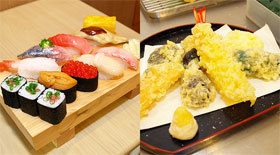 © IWASAKI-Bei 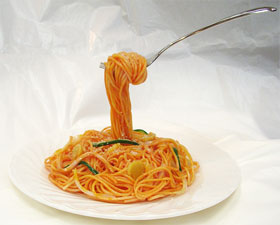 © Tokyo Kappabashi Dougu Street Promotion Union 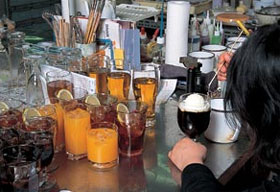 © Sugawara Chiyoshi 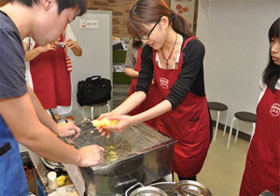 © Kappabashi Showroom, Ganso Sample-ya, IWASAKI Co. 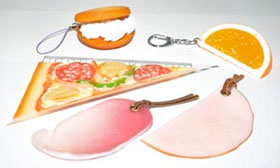 © Web Japan |
Resources
|
“Food Replicas”. 2012. Web Japan. https://web-japan.org/trends/11_culture/pop121022.html. “Learn more about Iwasaki Mokei”. 2014. Sample Village Iwasaki. Accessed 13 September. https://iwasakimokei.com/en/about/. “Faux-Real Delicious”. 2022. Japan House Los Angeles. https://www.japanhousela.com/articles/ramen-bowl-faux-real-delicious/. “The Story Behind Plastic Foods in Japan”. 2019. ANA. https://www.anaexperienceclass.com/the-story-behind-plastic-foods-in-japan/. Portée, Alex. 2022. “A feast for the eyes: The Japanese art of fake food”. TODAY. https://www.today.com/food/trends/sampuru-japanese-art-fake-food-rcna26990. |
|
Japan Creative Centre 4 Nassim Road, Singapore 258372 +65 6737 0434 / jcc@sn.mofa.go.jp https://www.sg.emb-japan.go.jp/JCC/ Nearest parking at Orchard Hotel & Delphi Orchard |
 |